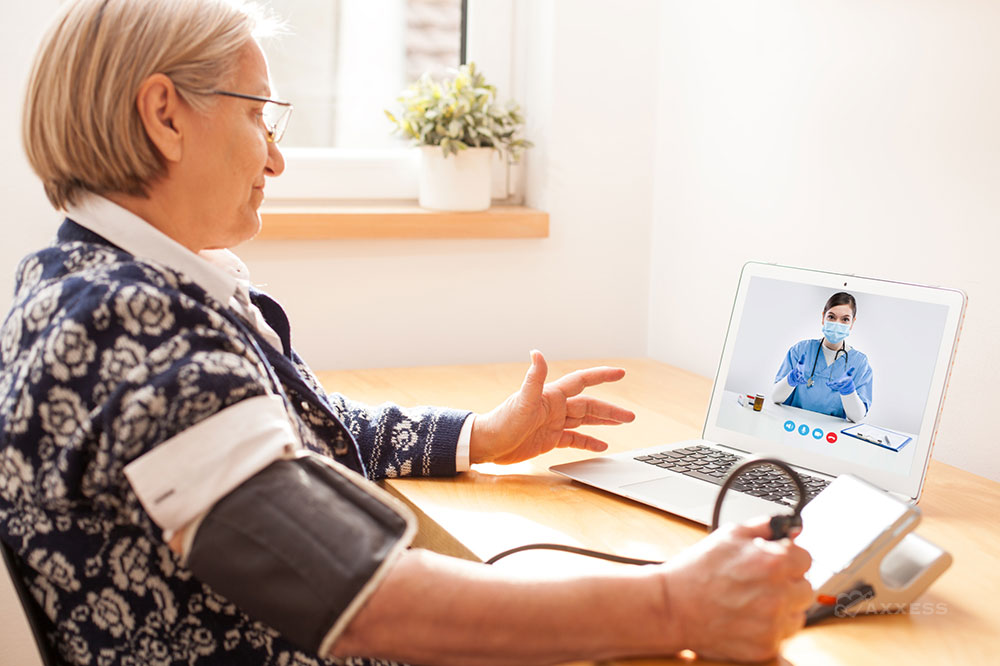
As we continue to face repercussions of the pandemic, we also face an epidemic related to the shortage of staff in almost every home health organization across the country. There is no exception.
Technology has played a significant role in caring for COVID-19 patients for the past two years. The use of remote care monitoring has been critical to the health and safety of our patients and caregivers. Technology continues to gain recognition as a solution for the combined shortage of staff and health crisis.
With remote care monitoring serving a dual purpose, it could be referred to as an actual “lifeline to care.”
Why Now is the Time for Remote Care Monitoring
The Centers for Medicare and Medicaid Services (CMS) has indicated that it fully expects to implement Value Based Purchasing (VBP) in 2023. The year 2022 is considered an implementation year by CMS.
Experts in our industry agree that remote care monitoring (RCM) is one of the key pieces of technology organizations should carefully research. In preparation for a significant change in how home health agency (HHA) data will be measured, a considerable amount of time should be spent examining opportunities available with various RCM providers.
Why the Numbers Are Pointing to RCM
Data gathered by Medicare Payment Advisory Commission (MedPAC) in the past gives us some indication on how the reduction of visits can affect patient outcomes.
Between 2011 and 2019, episode volume declined by 11 percent and the number of users dropped 4.3 percent.
- The decline in visits has continued at an accelerated rate since 2020 and has a significant impact on the number of hospitalizations and re-hospitalizations.
The number of visits per patient decreased between 2011 and 2019. This decline was a consequence of two other utilization declines in this period: a decline in the average number of episodes per home health patient and a decline in the average number of visits per episode.
- This decline in the number of times the patient has had direct contact with clinicians has specific consequences. Poorer outcomes are, likely, to be a direct result of decreased patient contact. With the beginning of the Patient-Driven Groupings Model (PDGM), HHAs have been forced to look at utilization. As a result, many patients receive fewer visits. Low Utilization Payment Adjustment (LUPA) rates drive the industry to consider decreasing the number of visits. This reduction also affects time for teaching and training, observation and assessment, etc., and has the potential for significant adverse consequences that can be mitigated with the use of RCM.
The average payment per full episode was $3,167 in 2019, an increase of 8.6 percent relative to 2011.
- This RCM technology was finally recognized as a lifesaving measure during the pandemic in many cases. Physicians immediately relied on RCM to continue their practices remotely. Home care and hospice quickly followed suit by connecting to patients through technology, literally creating a lifeline to care. This reported increased rate is subject to considerable challenges now and over the next several years. 2022 is a pivotal time for the industry to make the much-needed adjustments.
We should use 2022 with the intent of restructuring our healthcare delivery system to accommodate the very best patient outcomes possible. CMS has given us this year to prepare for the impact of VBP.
Technology will become a pillar in our plans in creating a culture of patient outcomes first. In part two of this RCM series, we will explore its impact on the plan of care and how clinicians should adapt. Now is the time for doing your research in the remote care world.
Axxess Home Health, a cloud-based home healthcare software, provides convenient integrations to accommodate virtual visits, as well as built-in documentation tools following HIPAA guidelines.
